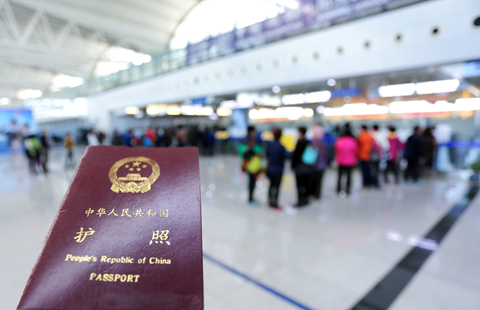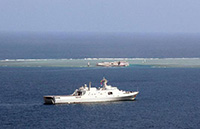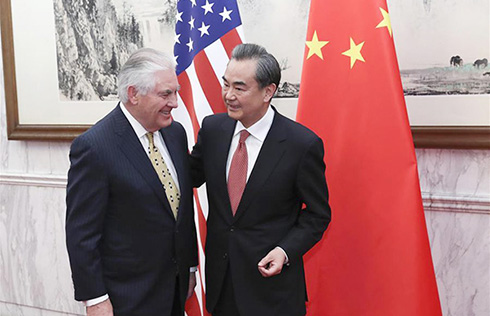Easy does it for liberalization
China knows it must maintain a steady course to achieve long-term stability and contribute to the world
China's steady and controlled pace of capital market liberalization is essential for the country's long-term stable growth and its contribution to international development, according to Phyllis Papadavid, head of international macroeconomics at the Overseas Development Institute think tank.
|
 |
|
PHYLLIS PAPADAVID of the Overseas Development Institute think tank said China could play a coordinating role in setting up a regional institutional initiative to fill the global governance gap. CECILY LIU/CHINA DAILY |
Papadavid says China has the potential to champion globalization and advocate for emerging economies in the global governance system. But first it needs to achieve the objective of steady liberalization, while dealing with the major challenges of boosting domestic growth and reducing debt levels.
"China's ability to deal with these challenges at the same time is impressive, considering that some developing countries historically have found it difficult to deal with the challenge of liberalization alone. Examples can be found in sub-Saharan Africa and Latin America," Papadavid says.
Historically, some emerging countries have liberalized their capital account controls too quickly. Liberalization in Latin America resulted in the 1980s debt crisis, a "lost decade" during which the region's countries reached a point where their foreign debt exceeded their earning power and they were not able to repay it.
"Some of those countries liberalized too quickly. They opened up prematurely and out of necessity because they needed international capital or were in crisis. Often yields escalated," she says.
Once capital flies to safe-haven options, such as the United States dollar, the Swiss Franc and gold, boom-bust cycles also ensue.
"Inflows of foreign investment into emerging market stock markets were followed by sharp reversals," Papadavid notes. "This had detrimental growth effects in countries that were most in need of inward investment to support growth."
The Latin America debt crisis had its roots in the 1960s and 70s, when countries including Brazil, Argentina, and Mexico borrowed large sums from international creditors to help with industrialization, and especially infrastructure programs.
Soaring growth rates in those countries meant foreign investors were happy to lend, but eventually, when the international capital markets realized that Latin America would not be able to pay back its loans, interest rates increased to an average annual rate of 20.4 percent between 1975 and 1982.
This led Latin America to quadruple its external debt, from $75 billion in 1975 to more than $315 billion in 1983, or 50 percent of the region's GDP. Capital flight followed and there was a sudden withdrawal of funds.
By comparison, China is managing its liberalization process well, because it is opening up its foreign direct investment channels in a slow and thoughtful manner, Papadavid says.
"Policymakers have already liberalized foreign direct investment channels considerably, but the focus of attention will now be on further liberalization in the financial account: opening up its bond market and equity market for increased foreign access," she says.
Despite its controlled pace, China's capital market has already liberalized significantly during the past few years. The Hong Kong-Shanghai Stock Connect, launched in 2014, allows foreign access to a significant portion of stocks in China's domestic market. China's gradually increased allocation to foreign investors of Qualified Foreign Institutional Investor and Renminbi Qualified Foreign Institutional Investor quotas has enabled many international funds and investment management companies to buy into China's stock and bond markets.
In 2016, China further liberalized its interbank bond market, which was welcomed by foreign investors. Valued at about $7 trillion, the interbank bond market is the third-largest globally, and the 2 percent foreign participation only points to large potential for growth.
Meanwhile, the liberalization of China's domestic capital market is being accompanied by the internationalization of the renminbi, which reached a milestone in its journey to become a global reserve currency in October when it was included in the International Monetary Fund's basket of special drawing rights currencies.
"In time, renminbi internationalization can bring more stability to the global financial system, as we move toward a tripolar currency world centered on the dollar, euro and renminbi," says Papadavid.
As of December 2016, the renminbi is the sixth-most widely used currency for international transactions, accounting for 1.68 percent of global payments.
Despite its small-scale, its potential is large: The renminbi is increasingly becoming a preferred trade currency for transactions involving China and its major trading partners, and many central banks, such as the Central Bank of Nigeria, are holding a growing amount of renminbi in their reserves.
China's liberalization comes as the nation is playing a stronger role in defending globalization and inclusive growth, as demonstrated by President Xi Jinping's speech at the World Economic Forum in Davos, Switzerland, in January.
Papadavid says China's leadership on globalization is encouraging, and she believes China is already contributing significantly to the inclusive growth agenda, with the China-proposed Belt and Road Initiative and the Asian Infrastructure Investment Bank being key examples.
"China has the capacity to contribute to the inclusive growth agenda because of its long-term growth prospects. President Xi's argument for emerging and developing economies to have more say in global institutions like the IMF is significant in demonstrating China's leadership role," says Papadavid.
She says one particularly interesting question is whether China will lead or coordinate a regional institutional initiative to fill the global governance gap.
"Adequate global governance is currently lacking. A China-led institutional solution to this could provide the liquidity and safety nets that are lacking for developing and emerging economies during times of crisis," says Papadavid.
Following the 1997-98 Asian Financial Crisis, Japan proposed the idea of an Asian equivalent to the IMF. This problem was that, while the IMF lent help to many Asian countries in crisis, the funding was given based on strict conditions, and borrowing costs were high. Although the idea never came to fruition, the growth of Asian economies suggests the time might be right for such an institution.
Papadavid says China could play a coordinating role in setting up such an institution, and in time, a stable and free-floating renminbi could offer an advantage for its coordinator role.
"Many developing countries already use the renminbi and it could become an invoice currency for loans to developing countries," she says, adding that the emergence of an IMF-equivalent in Asia would be a part of an institutional and economic rebalancing between West and East.
"The institutional rebalancing is an extension of previous Bretton Woods institutions, including the IMF and World Bank," she says.
The Bretton Woods system, created in 1944, was a monetary order intended to govern monetary relations between and among independent nation states. It was negotiated by advanced economies during World War II, including the US, UK, Canada and Australia. International institutions, including the World Bank and the IMF, were born from this system. Consequently, emerging economies had very little representation.
But as emerging and developing countries are growing in economic influence now, a new system is needed. Papadavid says she sees China and the renminbi as having roles in this system.
"As China internationalizes the renminbi, it is important for it to liberalize with a high level of transparency and communication. China already recognizes this," she says.


























